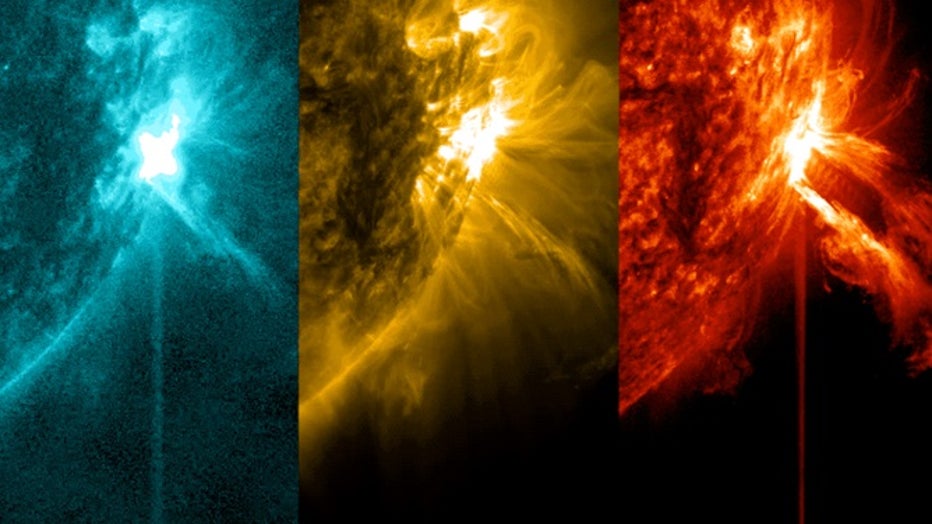See the massive solar flares the Sun spit out this week

FILE - In this handout photo provided by NASA, a Solar and Heliospheric Observatory image shows Region 486 that unleashed a record flare on the sun in 2003. (Photo by NASA via Getty Images)
The Sun put on a firework show this weekend, emitting one powerful X-class flare and at least one other intense burst of radiation.
Thankfully, NOAA and NASA spacecraft are constantly watching the Sun, and we can see amazing images of hot materials spewing out into space.
Solar flares are eruptions of radiation from the Sun that send powerful bursts of energy and hot material out into the universe. Powerful solar flares can cause high-frequency radio blackouts in the polar regions and pose risks to space launches and spacecraft orbiting Earth. However, most people do not need to be concerned as these energetic particles do not reach low enough into Earth's atmosphere to affect the public.
WHAT IS THE 11-YEAR SOLAR CYCLE?
NASA’s Solar Dynamics Observatory (SDO) captured this beautiful solar flare on Friday.

NASA’s Solar Dynamics Observatory captured these images of a solar flare – as seen in the bright flash on the right of each image – on Feb. 16, 2024. The images show three subsets of extreme ultraviolet light that highlight the extremely hot material
Here's another look from NOAA's GOES East satellite showing the full Sun disc.
According to NOAA’s Space Weather Prediction Center (SWPC), the flare was identified as an X2.5 flare. Solar flares are classified according to strength, with the least intense known as B-class, followed by C, M and the most intense, X-class. The number reflects its strength.
On Friday, the SWPC warned high-frequency radio users that signals may suffer temporary outages.
Then, on Saturday, another powerful solar flare was spotted by GOES-16 using its Solar Ultraviolet Imager, known as SUVI. A version of SUVI has flown on all newer GOES satellites and can send back images to Earth within minutes to forecasters with NOAA's Space Weather Prediction Center.
SCHOOL BUS-SIZED SATELLITE TO COME CRASHING INTO EARTH'S ATMOSPHERE THIS WEEK
NOAA’s Cooperative Institute for Meteorological Satellite Studies at the University of Wisconsin-Madison shared the dramatic image sequence below. Because the flare happened on the back side of the Sun, it was unlikely to affect radio frequencies on Earth or cause any other space weather impacts.
Because the Sun is so hot, satellite images are taken at ultraviolet wavelengths.
Each SUVI channel is a different wavelength of ultraviolet light, which samples plasma in varying temperatures in the Sun's outer atmosphere, known as the corona. The images below are 304 Angstroms, which measure cooler plasma at 50,000 degrees Kelvin. This is cool relative to the Sun, according to solar physicists.
According to NASA, SDO captured 1 X-class flare, 13 M-class flares and 28 coronal mass ejections this week.

